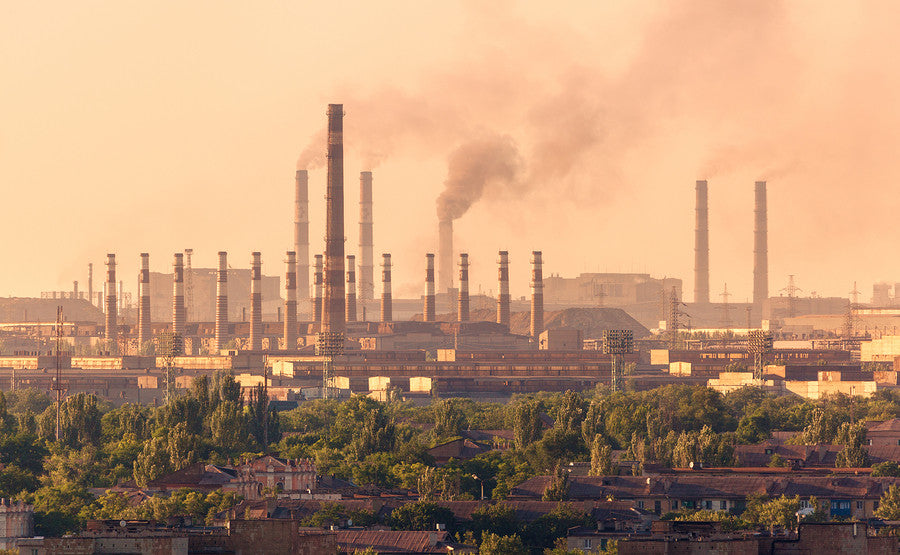So What Is Factory Farming?
Factory farming, or concentrated animal feeding operations (CFAOs) are massive agricultural practices that produce large amounts of animals for human consumption. The sole purpose of these factories are to raise animals for food. The animals are “grown” in a confined space to minimize operation costs, and this mass production drives down the food prices as it allows for the production of excess amounts of animals to meet the demand.
However, except for offering abundant amounts of cheaper foods, factory farming is an unhealthy agricultural practice to humans, the animals themselves, and the environment. Factory farming has contributed to serious pollution problems, animal treatment is inhumane and it has smothered the business opportunity of traditional farms and its workers by occupying their markets.
Problems With Factory Farming
The worldwide presence of factory farming has increased significantly over the past fifty years. If this type of “farming” is allowed to continue, it will certainly cause further environmental damage. These factory farms are defined by the Environmental Protection Agency as “a production process that concentrates large numbers of animals in relatively small and confined places, and that substitutes structures and equipment (for feeding, temperature controls, and manure management) for land and labor.” Unfortunately, traditional, pastoral, American farms where animals graze and exercise their natural behaviors are more often than not being replaced by these “farms” where animals processed for food live in filthy, cramped, unnatural conditions detrimental to the animals themselves and our environment as a whole.
Emissions

Staggeringly, over 37 percent of methane emissions result from factory farming. Methane, surprising, is 20 times more harmful than carbon dioxide. However, that doesn’t make the carbon dioxide emissions any less mind-boggling. The various fossil fuels used in the creation of energy and pesticide production emit 90 million tons of carbon dioxide into the atmosphere every year.
Deforestation
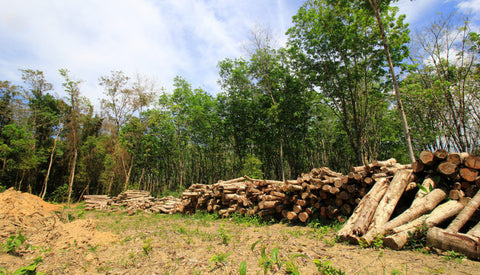
Air pollution isn’t the only side effect of factory farming; deforestation is a real and present problem. In just the US, over 250 million acres of forest has been cleared to make room for crop fields. The large majority are used to exclusively grow livestock feed. This is not a practice that only occurs in the United States, as land clearing in Brazil to mainly to grow chicken feed is responsible for the destruction of almost 3 million acres of rainforest. And these numbers only account for land cleared to feed and grow animals!
Fresh Water Supply
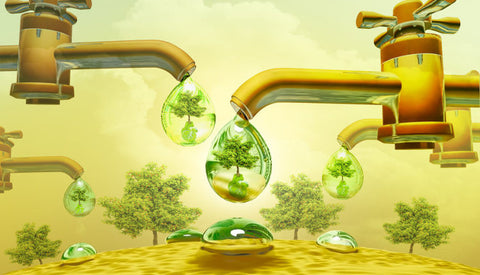
Additionally, industrial agriculture uses up 70 percent of the world’s fresh water supplies. Another mind-boggling fact is that the EPA estimates that 75 percent of all water-quality problems exist in the Unites States’ rivers and streams. Factory farming operations contain massive stores of animal waste, many of which have been known to leak into adjacent waterways, where microbes, bacteria, and nitrate levels can increase rapidly.
Factory Farming & Animals
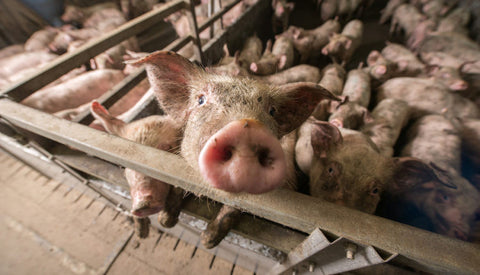
These days, there is more and more concern that the factory farming of animals – also known as concentrated animal feeding operations, or CAFOs – is inherently and morally wrong. The worldwide movement for animal rights, which, in its earlier years of existence, focused mainly on the use of animals for experimentation, is now coming to see that the factory farming of animals is by far a greater abuse of animals.
Really, the numbers speak for themselves. Just in the United States, anywhere between 30 million and 50 million birds and mammals are killed every year for research purposes. While that might seem like quite a high number, it only represents a very small portion of the death toll in the United States’ slaughterhouses. On average, these kill more than 10 billion animals each year.
Unfortunately, the large majority of these living creatures will have spent their entire lives stuck inside cages, never having the chance to go outside for even a single hour. This suffering isn’t merely for a short time, it’s a life of it.
What Happens to Animals in Factory Farms?
Cows and veal calves are stuck in crates too narrow for them to even turn around, or even to take a few steps. Egg-laying hens are unable to stretch their wings due to the cramped quarter to which they are confined. As their “living quarters” are so confined and crowded, many become agitated and attack one another. To prevent losses, many times producers will sear off the beaks of the hens with a hot knife, cutting through sensitive nerves.
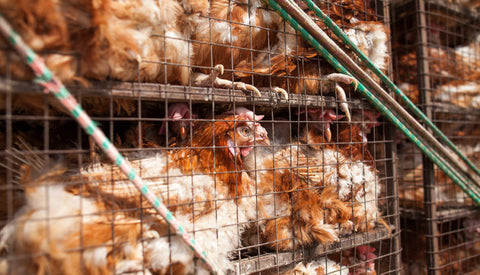
These chickens, the majority of which live their entire lives in coops that hold tens of thousands of birds, are now bred to grow so fast that a large majority of them develop leg problems. These problems develop because their fragile, young bones simply cannot hold the weight of their unnaturally heavy bodies.
“Broilers are the only livestock that are in chronic pain for the last 20 percent of their lives,” says Professor John Webster of the University of Bristol’s School of Veterinary Science. “They don’t move around, not because their bodies are overstocked, but because it hurts their joints so much.” Sometimes these chickens’ legs collapse under them due to their body weight, causing many of them to starve due to the inability to reach their food.
As depressing as these stories and facts are, they are only a fraction of the existing evidence that factory farming is incredibly detrimental to our environment, the animals themselves, and, in the long run, humanity. It is more than clear that industrial animal farming needs to stop. While it will take a lot of like-minded individuals to make a difference, it all starts on an individual basis.
Do Your Part

If you haven’t already, STOP eating meat! The livestock industry in a major driver behind the evidence presented in this article. Another option is to purchase local and organic produce only, which also supports small-scale farming that grows crops without using harmful pesticides. Consider growing your own vegetables and fruits, and be a part of the slow food movement.
It is most definitely a time for a shift in values regarding consumption and productions. This is certainly one of the biggest moral issues of our time, and it is one that is consistently left on the back burner. It is a simple decision, and one that should be driven by our moral standards. Supporting and consuming products from CFAOs should be seen as a moral violation, breaking the ethical standard of how we should treat the environment, animals, and ultimately, ourselves.

